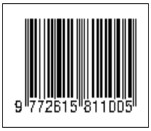MASTERING READING SKILL FASTER
Abstract
This is a qualitative study in which the author use a literature review paradigm approach. The goal of this research is to discover the quickest technique to increase reading skills. Several periodicals and articles about how to increase one's reading abilities are the focus of this study.
The findings of this study reveal that, reading materials and activities should be very interesting for students so that they can easily absorb books, and must be adapted to their level of competence. Teachers should motivate their students to read these materials, be sensitive to their students' comprehension difficulties, and assist their students in changing their attitudes towards reading and developing positive attitudes towards their reading activities so that they can better understand various textsKeywords
Full Text:
PDFReferences
Ahmadi, M. R., & Pourhoseiin Gilakjani, A. (2012). Reciprocal Teaching Strategies and Their Impacts on English Reading Comprehension. Theory and Practice in Language Studies, 2(10), 2053-2060. http://dx.doi.org/10.4304/tpls.2.10.2053-2060
Alyousef, H. S. (2005). TEACHING READING COMPREHENSION TO ESL/EFL LEARNERS. The Reading Matrix, 5(2), 143-154.Retrieved from http://www.readingmatrix.com/articles/alyousef/article.pdf
Anderson, R. C., & Pearson, P. D. (1984). A schema-theoretic view of basic processes in reading. In P. D. Pearson, R. Barr, M. L. Kamil, & P. Mosenthal (Eds.), Handbook of reading research (pp. 255–292). New York: Longman. Retrieved fromhttp://hdl.handle.net/2142/31284
Anderson, R. C., Hiebert, E. H., Scott, J. A., & Wilkinson, I. A. G. (1985). Becoming a Nation of Readers. Washington, D. C.: National Institute of Education.
Anderson, R. C., Reynolds, R. E., Schallert, D. L., & Goetz, E. T. (1977). Frameworks for comprehending discourse. American Educational Research Journal, 14, 367–382. http://dx.doi.org/10.3102/00028312014004367
Armbruster, B. B., Anderson, T. H., &Ostertag, J. (1987). Does text structure/summarization instruction facilitate learning from expository text? Reading Research Quarterly, 22, 331–346. http://dx.doi.org/10.2307/747972
Block, C. & Israel, S. (2005). Reading first and beyond: The complete guide for teachers and literacy coaches. Thousand Oaks, CA: Corwin Press.
Duke, N. (2003). Comprehension instruction for informational text. Presentation at the annual meeting of the Michigan Reading Association, Grand Rapids, MI.
Duke, N. K. & Pearson, (2005). Effective practices for developing reading comprehension. Retrieved from http://www.ctap4.org/ infolit/trainers/comprehe_strategies.pdf
Gillet, J. W., & Temple, C. (1994). Understanding reading problems: Assessment and instruction (4th ed.). New York: Harper Collins.
Hedge, T. (2003). Teaching and learning in the language classroom. UK: OUP.
Kose, N. (2006). Effects of portfolio implementation and assessment critical reading on learner autonomy of EFL students. Retrieved from http://www.belgeler.com/blg/12ta/effects-of-portfolioimplementation-and-assessment-on-critical-reading-and-learner-autonomy-of-elt-students
McNamara, D.S., &Magliano, J. P. (2009). Towards a comprehensive model of comprehension. In B. Rose (Ed.), The psychology of learning and motivation (pp.297-384). New York, NY: Academic Press.
National Reading Panel. (2000). Comprehension III teacher preparation and comprehension strategies instruction. (Chap.4). Retrieved from http://www.nichd.nih.gov/publications/nrplch4-111.pdf
National Reading Panel. (2000). Teaching children to read: An evidence-based assessment of the scientific research literature on reading and its implications for reading instruction. Washington, DC: National Academy Press.
Paran, A. (2003). Intensive Reading EnglishTeaching Professional, 28,40-48. Cambridge: Cambridge University Press.
Paris, S. C., Wasik, B. A., & Turner, J. C. (1991). The development of strategic readers. In R. Barr, M. L. Kamil, P. B. Mosenthal, & P. D. Pearson (Eds.), Handbook of reading research (Vol. 2, pp. 609–640). New York: Longman.
Pollard-Durodola, S. D., Gonzalez, J. E., Simmons, D. C., Kwok, O., Taylor, A. B., Davis, M. J., & Simmons, L. (2011). The effects of an intensive shared book-reading intervention for preschool children at risk for vocabulary delay. Exceptional Children, 77(2), 161-183. http://dx.doi.org/10.1177/001440291107700202
Pourhosein Gilakjani, A., & Ahmadi, S. M. (2011). The Relationship between L2 Reading Comprehension and Schema Theory: A Matter of Text Familiarity. International Journal of Information and Education Technology, 1(2), 142-149. http://dx.doi.org/10.7763/IJIET.2011.V1.24
Pressley, G. M. (1976). Mental imagery helps eight-year-olds remember what they read. Journal of Educational Psychology, 68(3), 355–359. http://dx.doi.org/10.1037/0022-0663.68.3.355
Pressley, M., Symons, S., McGoldrick, J. A., & Snyder, B. L. (1995). Reading comprehension strategies. In M. Pressley & V. E. Woloshyn (eds.), Cognitive strategy instruction that really improves children’s academic performance. Cambridge, MA: Brookline Books.
RAND Reading Study Group. (2002). Reading for under-standing: Toward a research and development program in reading comprehension. Santa Monica, CA: Office of Education Research and Improvement.
Salmaa. (2021). Studi Literatur: Pengertian, Ciri-Ciri, dan Teknik Pengumpulan Datanya. Retrieved from https://penerbitdeepublish.com/studi-literatur/
Snow, C. E., Burns, M. S., & Griffin, P. (Eds.). (1998). Preventing reading difficulties in young children. Washington, DC: National Academy Press.
Stahl, K. A.D. (2003). The effects of three instructional methods on the reading comprehension and content acquisition of novice readers. Paper presented at the meeting of the National Reading Conference, Scottsdale, AZ.
Susanti, R. 2002. Penguasaan Kosakata dan Kemampuan Membaca Bahasa Inggris. Jurnal Pendidikan Penabur, 1 (1).
Wallace, C. 1992. Reading. Oxford: Oxford University.
Waring, R. (1997). Graded and Extensive Reading–Questions and answers. The Language Teaching on line. Available: http://jaH-publications. Ogr/tlt/files/ /79/may/Waring. Html.
Williams, E. 1984. Reading in the Language Classroom. London: Macmillan.
Wixson, K., Peters, C., Weber, E., & Roeber, I. (1987). New directions in statewide reading assessment. The Reading Teacher, 40(8), 749-755.
Wood, E., Woloshyn, V. E., & Willoughby, T. (1995). Cognitive strategy instruction for middle and high schools. Cambridge, MA: Brookline Books.
Yang, W., Dai, W.,&Gao, L. (2012). Intensive Reading and Necessity to Integrate Learning Strategies. English Language and Literature. 2(1), 55-63. http://dx.doi.org/10.5539/ells.v2n1p112
DOI: https://doi.org/10.35327/gara.v16i2.333
Refbacks
- There are currently no refbacks.
Copyright (c) 2022 GANEC SWARA

This work is licensed under a Creative Commons Attribution-ShareAlike 4.0 International License.










